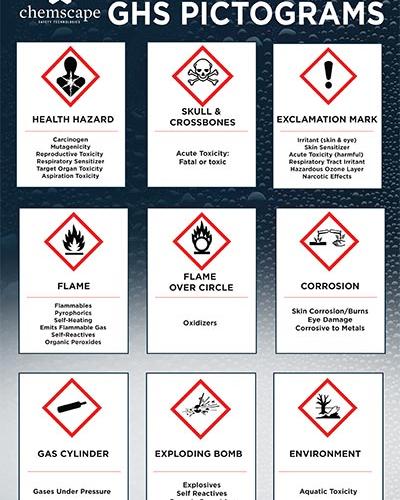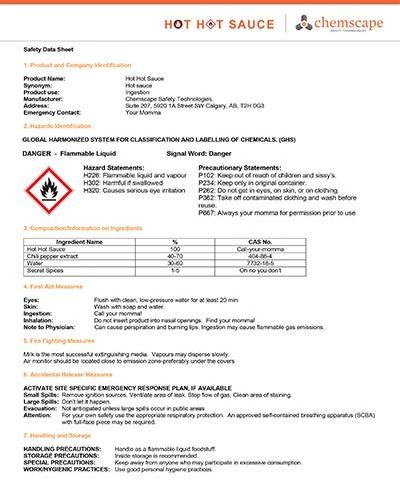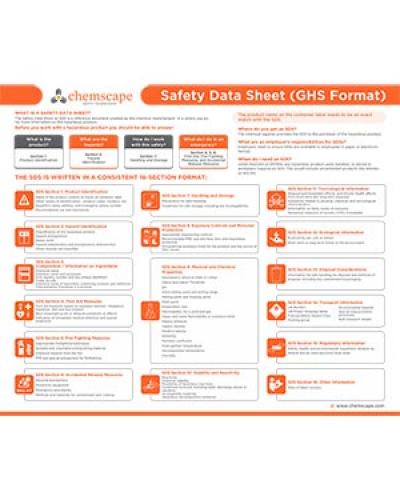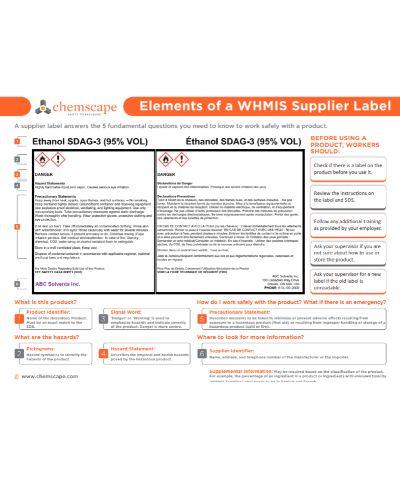SDS Fundamentals
For over fifteen years, Chemscape has been a leader in SDS management solutions, providing Canadian and US businesses with essential SDS information, insights, resources and services. This informative SDS fundamentals resource centre provides an in-depth look at commonly asked questions surrounding Safety Data Sheets (SDS).
Get In-depth Information About Safety Data Sheets
Explore our technical guides, related blogs, and PDF resources for up-to-date information regarding regulatory requirements and best practices for compliance standards in this SDS Fundamentals resource centre.
SDS Essential Guides
Hazardous chemicals are dangerous to your workers’ health and your business operations. That’s where Chemscape comes in. Our SDS information and resources will guide you on how to work with hazardous products – and how to manage them – so that chemical confusion doesn’t derail your work schedule and every worker is safe on the job and healthy in retirement.
Chemscape wants to help you protect your company and your workers from the life-threatening and business-threatening consequences of hazardous chemicals. This resource section will provide you with fundamental information on Safety Data Sheets, as well as SDS Authoring information, to help you stay on top of managing Hazardous Product compliance.
PDFs and Other SDS Resources
Frequently Asked Questions About SDSs
The requirements for SDS updates are dependent upon the jurisdiction you are working in. For Canada, you would want to look at the provincial/territory workplace WHMIS laws for any variation. For the USA you would refer to the OSHA Haz Com laws for your state as some states may have requirements that exceed federal standards. In general, it is the chemical manufacturers / suppliers’ responsibility to update the SDS whenever there is new information regarding the hazards of a chemical product or when there are significant changes to the safety information. Best practice is for worksites to do an annual chemical inventory check to ensure their SDS library is up to date and current. See the guidelines for updating SDSs in Canada for provincial and federal workplaces.
Safety Data Sheets are mandatory for hazardous products. If a product arrives at the worksite without an SDS it needs to be quarantined until an SDS is obtained for the product.
Consumer products like WD-40 frequently purchase at a local hardware store may not be legislated to have an SDS but that does not mean the product is not hazardous and one may actually be available through the supplier. You may work with a product differently in the workplace then you do at home and this can affect the risk of the hazardous product and justify the availability of having an SDS on hand.
Manufacturers and suppliers of a hazardous chemical need to author a Safety Data Sheet for their product and make them available to customers and end users in their distribution chain. If a product has been imported from another country the distributor may be required to author a safety data sheet. Check with the local federal regulatory body in your country.
Anyone who is handling or storing the hazardous product should have access to the SDS. This may include employees who are transporting the hazardous product. Your SDSs also need to be made available to first responders in the event of an emergency. You can keep SDSs in an electronic version, on a mobile app or saved locally and printed.
Of course, Chemscape recommends outsourcing to sdsBinders for your Safety Data Sheet Management as it provides many advantages for you including:
- Access to your SDSs 24/7 either online or through our mobile app
- Access to sdsBinders massive library of current SDSs
- Always be compliant with your SDS Inventory
- Leave the work to sdsBinders to find your SDS documents
- Organize your SDS Binders how you want
- No limits to the number of users or binders
- Have a back-up file or printed copy of your SDSs
- Enjoy unlimited training and support on the sdsBinders
- Spend time managing other Health and Safety responsibilities and leave the SDS Management to Chemscape’ sdsBinders
The Safety Data Sheet or SDS is a document written by a manufacturer or supplier of a hazardous material that gives workers full details on what the hazards are and what to do if there is ever an emergency.
The purpose of an SDS is to help workers answer basic questions on the hazardous product. The 4 main purposes of an SDS are:
- To know what the product is (section 1: Product Identification).
- To understand what the hazards are (section 2: Hazard Identification).
- To know how to work safely with the product (section 7: Handling and Storage).
- To reference what to do in an emergency (section 4, 5, and 6: First Aid, Fire Fighting Measures, and Accidental Release Measures).
Section 7 of an SDS, handling & storage tells you how to work safely with a hazardous product and the steps you need to take in order to protect yourself.
The section that specifically details hazards is Section 2: Hazard(s) Identification. This includes the classification of the substance, label elements like pictograms, signal words, and hazard statements, as well as precautionary measures. This section helps users understand the potential dangers and necessary precautions for safe handling.
In Canada, a supplier needs to provide the SDS, in English and French to the purchaser of the hazardous product in hard copy (paper copy or mail) or by electronic means (email with PDF attachment or on a USB stick). It is not sufficient to simply provide a website address or hyperlink the download the SDS for the product they purchased.
The SDS posts a date of last revision in section 16 – other information. You will know if an SDS was updated by checking this date and comparing it to the previous you have on file. Suppliers do not need to contact customers with an updated SDS for past purchases of a hazardous product.









